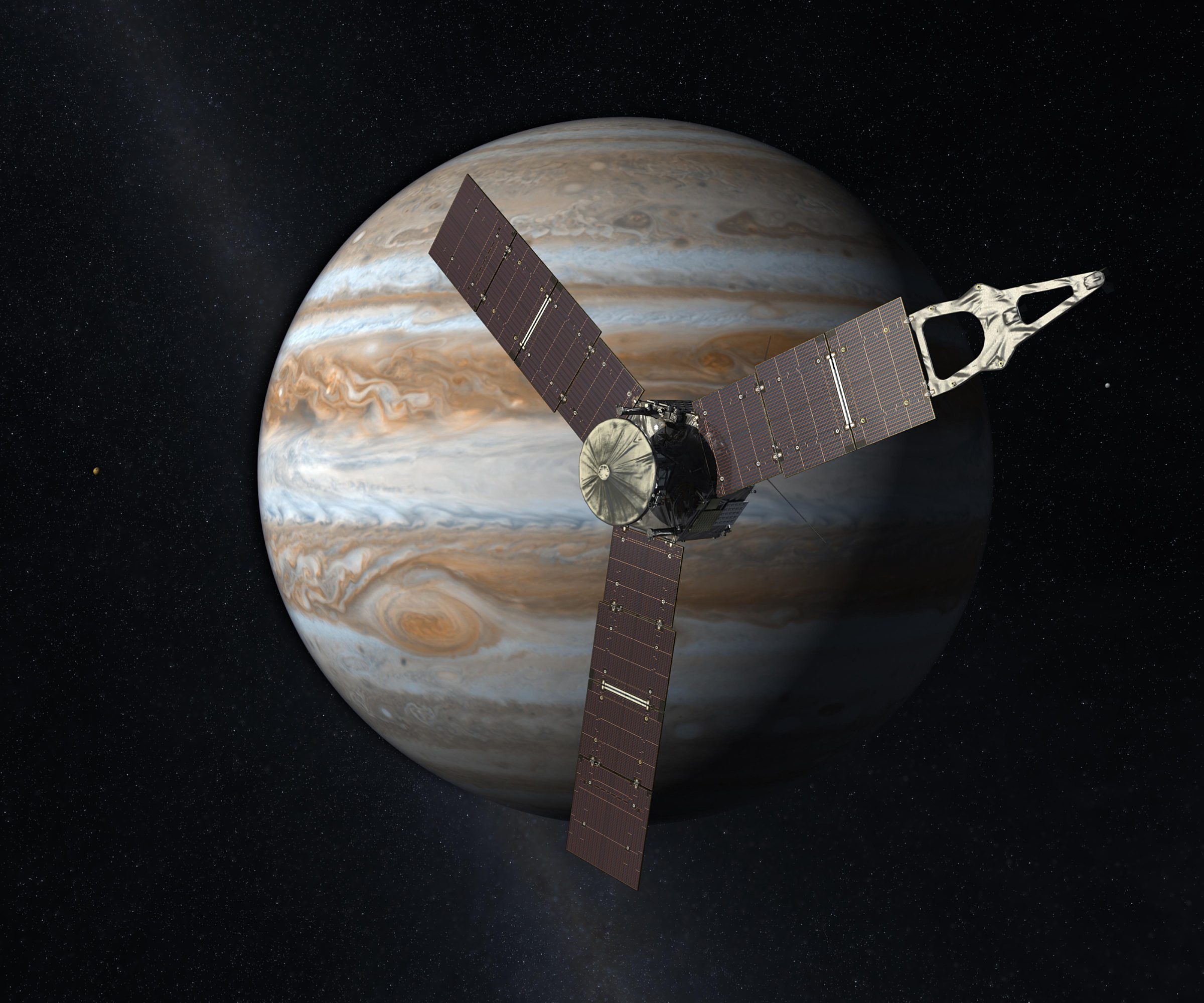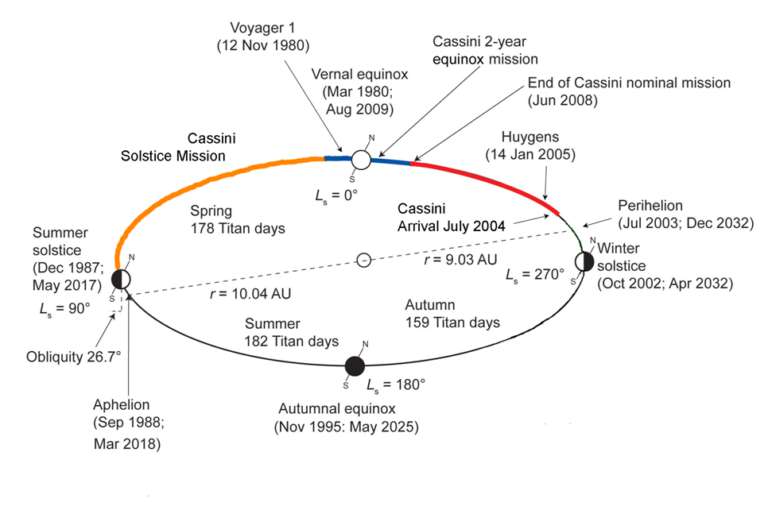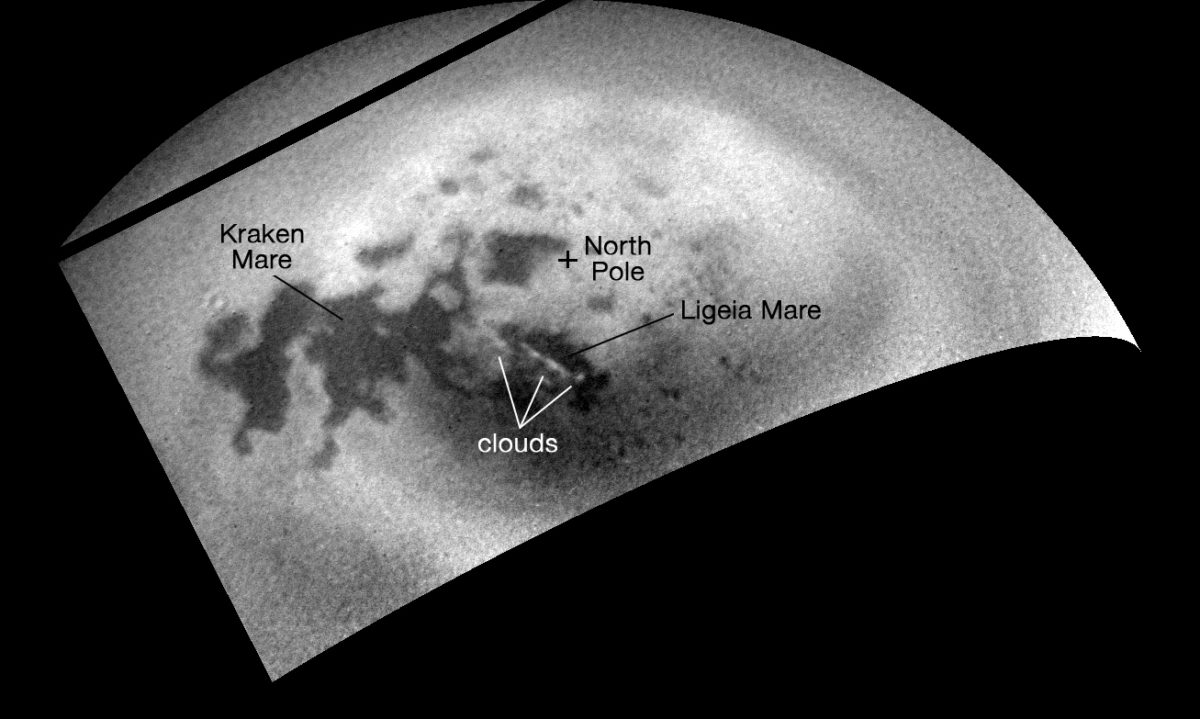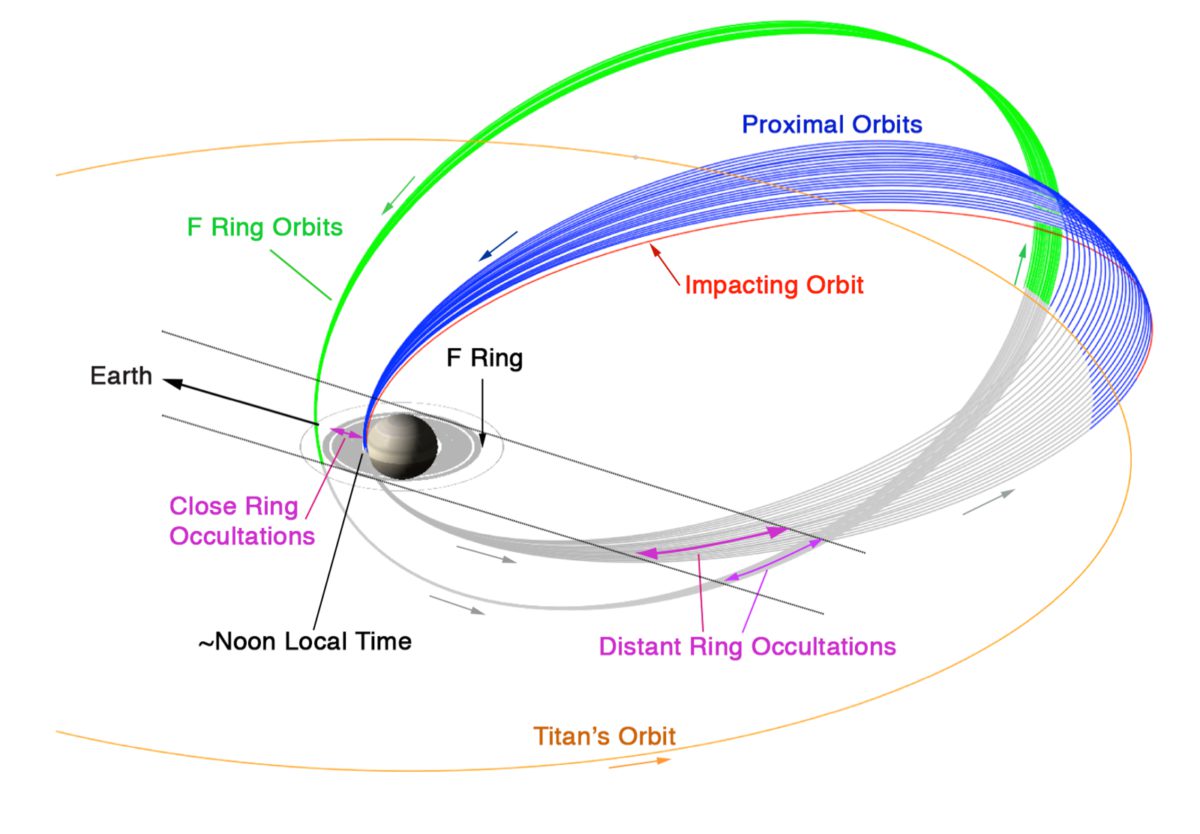Emily Lakdawalla • Sep 03, 2014
Cassini's awesomeness fully funded through mission's dramatic end in 2017
Last year, rumors swirled that NASA may be so pinched for dollars that the agency might end the Cassini mission early. Today, Cassini received the welcome news (PDF) that it has formally been funded through the planned end of its extended-extended mission in 2017, to the tune of about $60 million per year. Not only that, but they were the highest-rated mission of the seven being considered for extended-mission funding. A huge congratulations to the Cassini mission and all its team members for the assurance that you'll get to perform the awesome science you've promised to us!
What exactly is Cassini going to do during its final three years? NASA doesn't usually extend missions to do more of the same of what the missions already did. To justify extended missions, NASA requires teams to identify new scientific questions, and explain how their aging spacecraft can answer those questions. In effect, the teams are being asked to propose new missions. It makes sense, because the amount of money we're talking about here is not insignificant: all told, it will require a bit more than $200 million to operate Cassini for its final three-and-a-little-bit years (including the final archiving of its data). That is almost half the cost of a Discovery-class mission, and in an era of limited funds, that comparison is important. We love our active missions, but love isn't a good enough reason to fund them: can we get more science out of an old spacecraft than we could out of building a new one?
The Cassini mission answered that question with a resounding "yes." Here is a list of some of the great, new and different science they plan to do in Cassini's final years.
Observe Saturn's atmosphere and magnetosphere at exactly the same time as another spacecraft observes Jupiter's atmosphere and magnetosphere. Having the flagship Cassini mission observing Saturn at the same time that the New Frontiers mission Juno is orbiting Jupiter is going to multiply the value of the results from both missions. By observing how the two giant planets respond in their different ways at different seasons to the same solar activity, we'll get a better chance to form a more general understanding of how giant planets interact with stars. Honestly, this alone could justify the expense of Cassini's extended mission. The rest is just gravy.

Observe seasons never before witnessed on Saturn and its moons. Cassini's prime and extended missions included one quarter of a Saturn year; the spacecraft witnessed late winter through the arrival of spring to the north pole, and the opposite seasons in the south. Both the Voyager and Pioneer flybys took place at similar season.

By surviving past the summer solstice at Saturn's north pole in May of 2017, Cassini will be the first spacecraft ever to witness a solstice at Saturn, and will have seen nearly half a Saturn year -- meaning that it will have witnessed every possible season at Saturn (because while it's summer in the north, it's winter in the south). Jupiter doesn't have seasons like Saturn; this is our last chance to see seasonal evolution on a giant planet up close until a future mission is launched to Saturn, Uranus, or Neptune. Seasonal shifts in lighting also drive weather and rain on Titan. In fact, that leads us to another science goal:
Study the summer season at the north pole of Titan. So far, Cassini has mostly studied Titan's lake district in winter polar night, with radar. The recent arrival of spring has made the lakes increasingly visible to the cameras. Cassini has just witnessed its first-ever clouds at the north pole of Titan, a possible beginning to exciting new summer weather. Will there be more storms? Will the lakes shrink in the summer sun? We'll have to watch and see! Cassini has also recently developed a new technique to measure the depths of Titan's lakes, but only just deployed that on Titan's largest lake, Kraken Mare, and plans to test depths of the other lakes to see if they are all interconnected.

Watch to see how Enceladus' geysers change with time. During its prime and extended missions, Cassini discovered Enceladus' plumes, and then showed that the plumes vary with time as Saturn's gravity squeezes and pulls at the shape of the moon. In the final three years, Cassini will have three ultra-close flybys of Enceladus, using several of them to sample the plumes directly to see if their composition has changed. Also, armed with their new understanding of when the plumes are most active, they plan to fly through the plumes at the point in Enceladus' orbit where they're at their most active. The Enceladus flybys are on October 14 and 28 and December 19, 2015.
Map the north poles of Saturn's icy moons. With the Sun only recently risen on the north poles of everything in the Saturn system, global maps are not quite complete. There has not been an opportunity to fill in these gaps lately, because the most recent phase of Cassini's mission has been focused on the dynamics of atmosphere and rings, with Cassini in a steeply inclined orbit that afforded few opportunities for moon flybys. But beginning in March 2015, Cassini will return to the ring plane, allowing it to perform repeated Voyager-class flybys (by which I mean flybys of 10,000 to 100,000 kilometers distance) of most of the moons, closing up the last gaps in imaging. This is particularly important for Enceladus, where we need to understand why the north pole behaves so differently from the south pole. Some of these flybys will be the closest-ever of some of Saturn's smaller moons. There are two extremely close flybys of Dione on June 16 and August 17, wrapping up work on surveying its gravity. Some of this is "more of the same" type science as in earlier parts of the mission, but with so many targets in the Saturn system, there is a lot of real estate on the mid-sized and smaller moons that is not yet thoroughly explored.
Focus on Saturn's ring "propellers" to help us understand what they can tell us about how planetary systems form. Cassini discovered these "propeller" objects in Saturn's rings, litttle mass concentrations that migrate and shift in ways we don't yet understand. In general, the rings are an ever-changing system. Figuring out why they behave the way they do could help us understand how our solar system transitioned from a disk of disorganized material to nucleating planets.

But after all of this comes the pièce de résistance. Cassini must end its mission by deliberately plunging into Saturn's atmosphere, thus preventing it from impacting the intriguing prebiotic worlds of Enceladus or Titan. They'll do that by dropping the close-approach point on its elliptical orbit, the periapsis, until the periapsis intersects Saturn. But on the way down they are going to have two very exciting mission phases, each of which, Cassini scientists have told me, is like a Discovery-class mission on its own.
On November 29, 2016, Cassini's periapsis will drop to a position only 10,000 kilometers beyond the F ring. They'll be so close to the rings that they'll be able to do radar backscatter measurements on them for the first time. The in-situ instruments will sample much more ring material, getting direct measurements of its composition. And they'll do sensitive measurements of the mass of Saturn and its rings.
But it gets better: on April 22, 2017, the final Titan flyby will abruptly change Cassini's periapse distance to fall in between Saturn's innermost D ring and the planet. Cassini will travel less than 4000 kilometers above the tops of the clouds. This part of the mission used to be called the "proximal orbits" but has now been renamed the "Grand Finale." The death-defying plunge past the cloud tops is awesome, to be sure, but what's the science? The combination of the Grand Finale and the F-ring orbits is the key. By orbiting very close to Saturn first outside, and then inside the rings, they will, for the first time ever, be able to measure the mass of Saturn's rings, and separate the gravitational effects of Saturn from its rings. We'll learn -- as Juno will be doing at the same time -- about the internal structure of Saturn. The gravity and magnetic field measurements Cassini will get at this time may finally tell us what Saturn's rotation rate is (something we still don't know to great precision).

When Cassini finally flies low enough to fall in to Saturn's atmosphere on September 15, 2017, it will be a day not to mourn it, but rather to celebrate its achievements. The day for mourning will come a month or few later, when Juno's mission likewise comes to an end. On that day, for the first time since the 1970s, Earth will have no active missions exploring any of the giant planets. There won't even be a mission on the way. The Voyagers and New Horizons will (hopefully) still be active way beyond Neptune, but Jupiter, Saturn, Uranus, and Neptune will only be visible through telescopes on Earth. This is the part where I should tell you to write to your representatives to support space exploration, and to support The Planetary Society's efforts to advocate for more funding for planetary science. But even that won't prevent the hiatus; it takes many years to develop an outer planets mission, and many more years to cruise to a target.
That's one reason why it's such important news that Cassini has won funding through the end of its planned mission. It's worth every penny, and more. Congratulations again to the Cassini team, and thanks for keeping the light on in the outer solar system for as long as you can.
Let’s Go Beyond The Horizon
Every success in space exploration is the result of the community of space enthusiasts, like you, who believe it is important. You can help usher in the next great era of space exploration with your gift today.
Donate Today

 Explore Worlds
Explore Worlds Find Life
Find Life Defend Earth
Defend Earth


